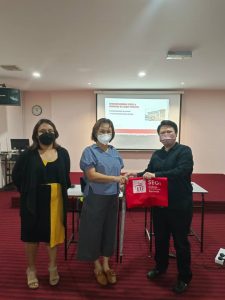By Ms Laura, Programme Leader, Faculty of Education and Social Science
As unbelievably small as Hobbits are, they do know a thing or two about making size and space work to their advantage. What can ECCE institutions learn about utilising space and size?
“Children begin developing their sense of place during early childhood,” said Aline Ong, the Principal of St Faith’s Kindergarten in Kuching, Sarawak. “This sense of place lets children know that they belong in the physical world around them, and in the social and cultural world they share with others.”
St Faith’s Kindergarten started as clergy flats in 1989 before standing on a ground of its own as a magnificent three-storey building in the heart of Kuching. This expansion and clever arrangement of space has enabled more of its young students to transition to new environments well.
“Just like adults, children get frustrated when they cannot easily move through an environment. This is where ECCE teachers like us have to ensure that the classroom is thoughtfully designed and materials for play are well organised.”
Speaking exclusively at SEGi College Sarawak’s session, ‘Effective Learning Spaces”, Aline indicated that properties should design indoor and outdoor spaces for logistics; sufficient for group activities, storage of materials and also for display.
“Displays are very important for both children and teachers too,” Aline expressed. “It sends a powerful message to the children about the value of their work. It also helps teachers keep track of their students’ developmental progress in school. So think about how you can display their work that tests their ideas and encourages their confidence.”
But what can ECCE teachers do when new preschoolers enter the classroom?
“Consider temporary changes to the classroom that will best support their engagement.” This also includes a place for quiet time where children can relax and rest, such as a resting room for one or two, or a cosy corner to help new preschoolers calm themselves.
“Another factor that has a huge impact is how to organise materials.” According to Aline, materials should be organised so children want to interact with them. Not only will they find the materials when they are needed but it will give the child a sense of independence as they familiarise themselves with where things are and where they are kept. In fact, this strategy is known to spark or build upon a child’s interests and encourage them to explore ideas.
Some top tips are to make the classroom feel like home and provide children with what they need to induce curiosity. Plan ahead and always keep safety a priority. The physical environment should be able to say “I can do things on my own” and “this is a place I can trust.”


